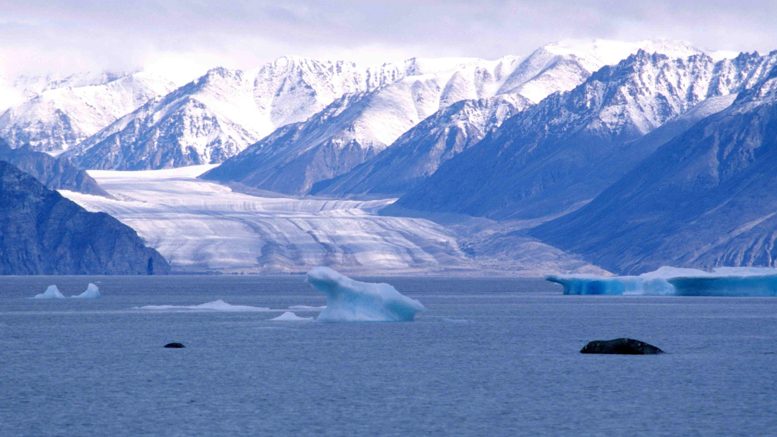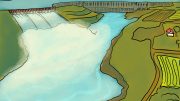According to a new study, Canada’s glaciers are having a serious effect on rising sea levels.
As climate change begins to rear its ugly head, its consequences are already making a significant difference to Canada’s landscape. The study, which was the first long-term analysis of ice flow into the ocean, found that surface melt from glaciers off the Queen Elizabeth Islands, a peak northern region shared between Nunavut and the Northwest Territories, had grown by 900 per cent between 2005 and 2015, jumping from an estimated three gigatons to 30 gigatons of melted ice per year.
Equally alarming is the shift in ice loss causation. The study states that prior to 2005, ice loss that could be attributed to simply melting accounted for about 48 per cent of ice loss. Now, only ten years later, it appears to be the cause of about 90 percent of all ice loss.
Rising sea levels can have devastating effects on our planet, including increased earth erosion, more powerful and destructive storms, and of course, massive flooding. The quick melting of glaciers caused by global warming is a large factor in rising sea levels, and Canada has the second-largest amount of Arctic ice in the world – behind Greenland – and therefore sits at the forefront of this dilemma.
The northern part of Canada is not the only part of the country to feel the effects of global warming on their icebergs. Studies have shown that glaciers in British Columbia and Alberta are expected to lose up to 80 per cent of their volume before the year 2100.
As the race to slow down global warming continues, environmental scientists are constantly offering new ideas as to how we approach this possible catastrophe. Industrial engineer Peter Flynn of the University of Alberta was the first to propose an extremely hands-on approach to the rapidly declining ice: pump massive amounts of saltwater on top of the ice, creating a thicker, sturdier sea ice. Flynn himself warns that this should be treated as an absolute last resort idea, however.
Another possible option for rebuilding glaciers through Arctic geoengineering comes from Steve Desch, an astrophysicist at Arizona State University. He proposes that, through the use of wind turbines, Arctic sea water could be brought to the surface and re-frozen. Desch spoke on his proposal during an episode of CBC Radio’s The Current, and says that while millions of wind turbines would be needed, and the overall cost to implement this plan would reach 500 billion dollars, it must be considered in comparison to other very expensive human endeavors, and says that it is indeed possible.





